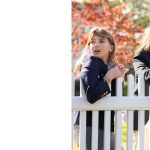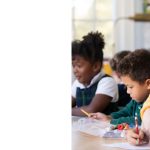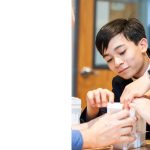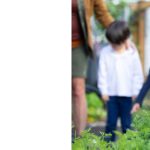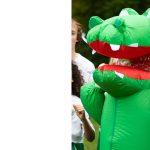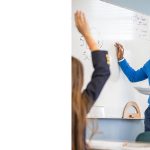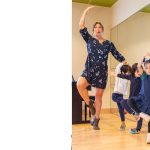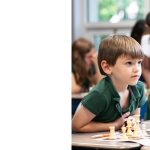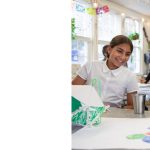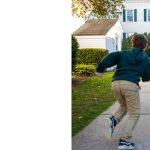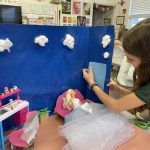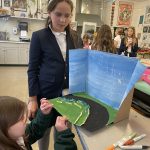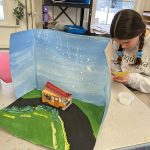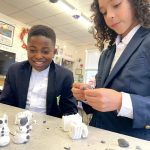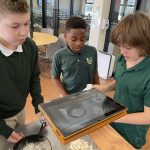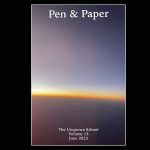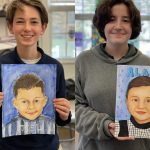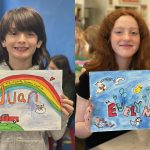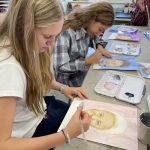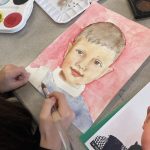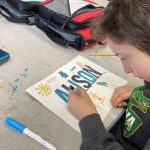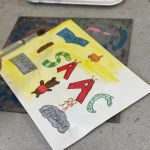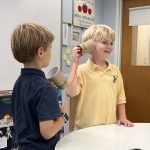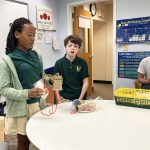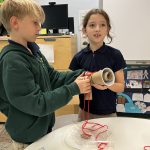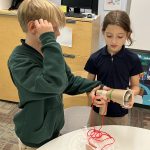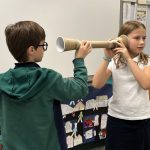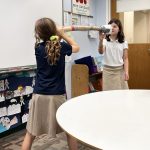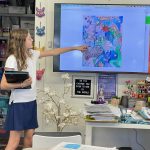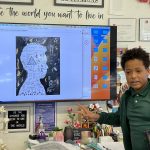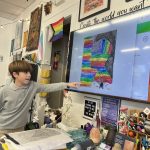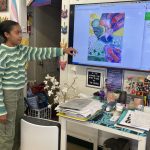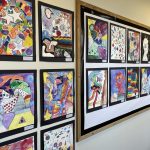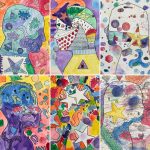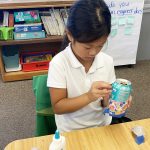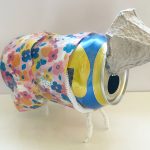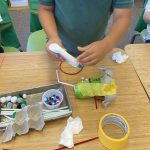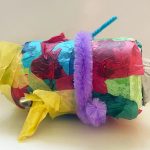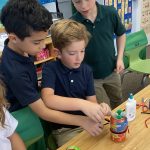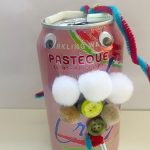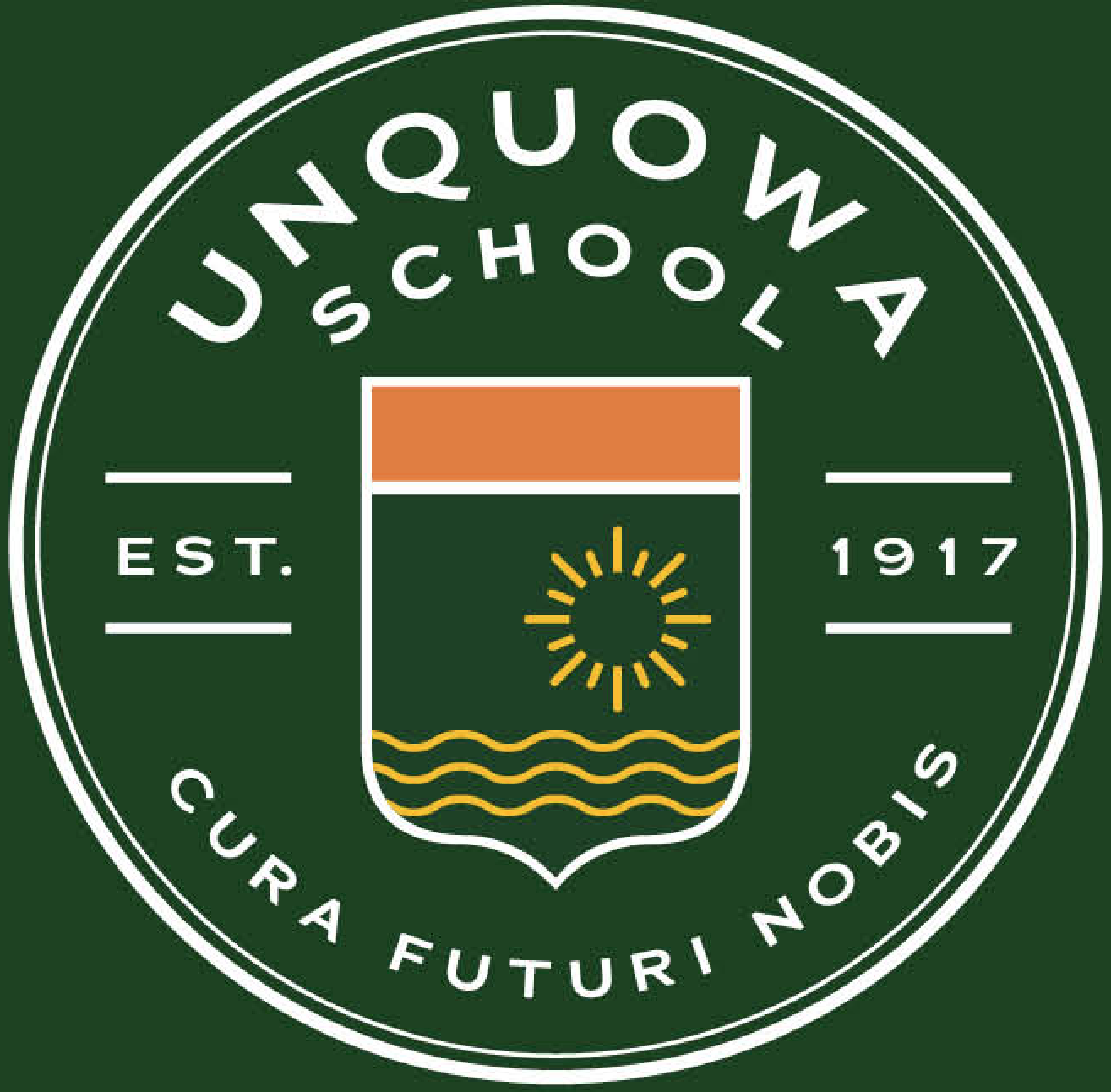Stop Motion in the Art Studio!
Posted by Krissy PondenSixth graders have been planning, prepping, and storyboarding their stop motion animations, and soon they will begin recording! Stop motion is an awesome introduction to animation, and it can be easily made with a free app and a camera. Students have been experimenting with clay, legos, pencils on paper, and even Barbies! It is so much fun to see the students’ animations coming to life, and they are loving the process!
Pen & Paper, Volume 13, “New Horizons.”
Posted by Eric SnowWe are proud to announce this year’s edition of Pen & Paper, Volume 13, “New Horizons.” This edition is organized around the themes of change and transition, beginnings and endings, aspirations and dreams. The Pen & Paper editorial team has worked hard to select, edit, and organize this issue, and we couldn’t be prouder to share it with the Unquowa community. This issue is 130 pages made up of 95 pieces of art, photography, short stories, and poetry taken from submissions and the 7th and 8th Grade Voices of Change projects. There are a total of 32 contributors.
The Memory Project: Art for Colombian Preschoolers
Posted by Krissy PondenIt has become a tradition for eighth graders to paint portraits for The Memory Project, a nonprofit organization that has students create art to send to children around the world who are experiencing hardship, and last year was the first time that seventh graders also participated by making art with the children’s names and words that describe them. This year the students created art for preschool students in Colombia. We learned about what has been going on in Colombia and how art can humanize those who are sometimes reduced to only their trauma by amplifying their individual stories. The finished pieces have been sent to The Memory Project, who will be sending it to the children in Colombia. We are grateful to once again have this opportunity to spread kindness through art.
Grade 4 Engineers
Posted by Karen EngelkeStudents in Grade 4 have been learning about Engineering and Technology in science. After examining the Engineering Design process, students were tasked with exploring a design problem. They learned how to ask questions and define problems to design a hearing-enhancing device. By examining the engineering process, students came to understand the influence of Engineering, Technology, and Science on Society and the Natural World. After they were given constraints and criteria for a hearing-enhancing device, they utilized various materials to create a prototype. Once their prototypes were complete, they presented them to Mr. Casey and the rest of the class and spoke about any problems or further enhancements they would make to their models.
Emotional Color Portraits Class Share & Critique
Posted by Krissy PondenThe sixth grade recently finished their emotional color portraits and wrote insightful artist statements explaining their projects. Each student shared their work during class and their classmates complimented them on what they liked best about their project. Class critiques such as this give students an opportunity to practice expressing their artistic process and choices and to receive positive feedback about their work. Be sure to check out the entire gallery of work currently displayed outside of the Technology lab!
Recycling Matters!
Posted by Stephanie SatonickThis week in second grade, students have been learning about matter. They learned that objects can be built up from smaller pieces, different objects can be built from the same set of pieces, and pieces can be taken apart from other objects. We started by studying art pieces and projects that showed different ways that people used different objects to create a brand new piece. For example, we took a look at an elephant made out of plastic water bottles and jugs, a house made from steel panels and rope, and a swing set made from recycled rubber. This inspired students to create their own piece using everyday objects, materials, and recycled cans to create a unique robot!


